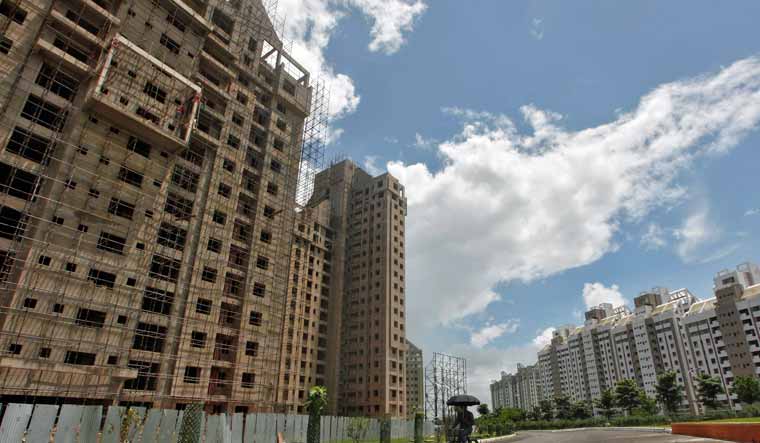India’s real estate business is riding on a wing and a prayer through Covid clouds, pinning its hopes on the veritable silver lining one is promised at the end of every cloud. Facing laggard prospects, its prayer is simply that the shine of this silver lining sparkles enough through the upcoming festive season.
A lot rides on the state of India’s real estate, and it is not just about whether homebuyers get their homes handed over on time. It is the second biggest employer, sector-wise, in the country. Combined with construction and infrastructure-spend, it is one of the biggest contributors to GDP, presently around 10 per cent. Thus, it becomes one of the most crucial indices on which one can measure the health of the state of the country’s economy.
“The real estate sector is still battling liquidity issues that existed in pre-Covid times — the Covid situation has only made it worse for the sector,” points out Satish Magar, national president of the Confederation of Real Estate Developers’ Association of India, the apex body of India’s realty business, to THE WEEK. He adds, “There is optimism that the festive season might lead to pick up in demand.”
India’s embattled property market, sledged on one side by major court battles and a general impression of being ‘fly-by-night’ operators and sucker-punched on the other side by the economic slowdown, did not know what hit it when Covid and lockdown hit. After Unlock, it was a gradual pick up from the ashes that is still underway.
“After a steep decline in sales during the lockdown, transaction volumes have improved in most of the major markets,” says Ankit Kansal, founder and MD of 360 Realtors, a realty advisory. While Kansal admits that his sales are way lower than what he sold in the same period last fiscal, he feels “it is the right pointer towards a gradual recovery.”
“The general mood is upbeat with the onset of the festive season. The consumer sentiment is strong, reflecting well in September sales,” argues Manju Yagnick, vice-president of Naredco (Maharashtra) and vice chairperson of Nahar group. There is optimism galore, with Magicbricks' latest PropIndex for the July-September quarter showing an increase in property searches by up to 40 per cent.
But website searches does not exactly mean customers are splurging on new homes, but the industry is hopeful. “There is a visible pent-up demand,” argues Kansal, pointing out how the upcoming festive season, starting with Navratri this weekend, would be crucial. “An increase of 10-15 per cent in the sales transaction is expected during Navratri and Diwali time,” he hopes.
Hope and putting its best foot forward aside, the sector is still hoping for government intervention for some future smooth sailing. “This optimism (needs to be) supported by the government by addressing demands of real estate like liquidity infusion, further decrease in home loans, loan restructuring and extending of the waiver of interest and interest on interest to large businesses also,” demands Magar.
“Government intervention is always a welcome step,” feels Kansal. “Like Maharashtra, other states should also think about reducing the stamp duty to push demand and rationalising GST rates.”
With jobs and salary cuts and the intense uncertainty about the future, the fear is that the homebuying market would still lag behind for a longer period. Even the Knight Frank’s latest report on investments in real estate shows that while private equity investments of 230 crore dollars came into the country this year so far, more than 80 per cent of it went to commercial real estate, or office space.
There is a glimmer to that silver lining yet. The ‘new normal’ that Covid spawned, with people working from home, has led to enquiries for bigger homes with designated space for working without interference, and that which address safety issues as well. Explains Mohit Goel, CEO of Omaxe Limited, “The preference of homebuyers is veering towards facilities in a home that addresses his health and safety concerns and also provide space for the office-going member of the family to conveniently work from home.”
The definition of ‘prime location’ has also changed, sort of. “The ‘walk-to-work’ concept may lose some of its sheen and prospective homebuyers might see the benefit in shifting to locations which may provide them with a good residential environment but may not be necessarily be in proximity to their workplace,” feels Farshid Cooper, managing director of real estate developer Spenta Corporation.








